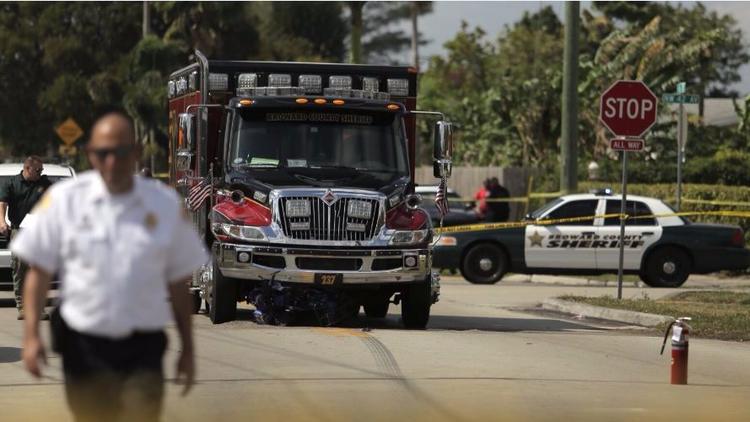Why don't people keep ATV's and dirtbikes off the streets? They are becoming a big problem here in So. Florida, running on the streets, running stop signs and red lights, and dying when they hit something. It's becoming a weekly occurrence, the dirtbike rider or ATV rider dead or seriously injured. The EMS education program I work for had a student on this truck when an ATV rider ran the intersection traffic control and hit the truck. You can see the ATV under the front bumper. During Martin Luther King Day there were hundreds of ATV's and dirtbikes running illegally, in packs, and one died and more were injured. I was at an intersection on a busy arterial road and two dirtbike idiots came thru the intersection, running the red light, where I had the green arrow to turn. No lights and one guy did it pulling a wheelie, standing on the seat, right in-front of me. Try that with an 85 year-old with poor reflexes, and that dirtbike might end-up across the hood of the Cadillac driven by the octogenarian.
http://www.sun-sentinel.com/local/b...ompano-teen-killed-in-atv-20170213-story.html

http://www.sun-sentinel.com/local/broward/lauderhill/fl-sb-lauderhill-atv-crash-20170215-story.html
http://www.sun-sentinel.com/local/b...ompano-teen-killed-in-atv-20170213-story.html
http://www.sun-sentinel.com/local/broward/lauderhill/fl-sb-lauderhill-atv-crash-20170215-story.html



